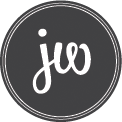For many beginners learning to read guitar tab is the first foray into reading music and has the potential to unlock many songs and instrumentals that would otherwise be unlearnable.
In this blog I'm going to show you how to read guitar tablature so that you can get started with reading guitar music.
Not all Instruments are made equal
All instruments have some peculiarities that effect the way they are played and notated. The guitar has quite a few idiosyncratic techniques and as such the notation looks a little different from other instruments.
The guitar is an octave transposing, treble clef reading instrument, which means that the sound the guitar makes is one octave lower than the written pitch. Whilst most classical guitarists exclusively read notation written in the treble clef, many contemporary guitarists playing electric or acoustic (steel strung) instruments read a secondary notation that sits underneath the traditional stave. This is known as tablature and is often just referred to as guitar TAB.
How To Read Guitar Tab
In essence tablature is a fingering chart. It graphically represents the six strings of the guitar and thusly consists of six lines, one for each string of the guitar, which in standard tuning gives us: E, A, D, G, B, E. Numbers are placed onto the strings to indicate in which fret the player should position their fingers. If the string is not to be played it is customary to leave the string blank.
Usually tablature accompanies traditional music. This is because it is hard to convey all the information needed by the guitarist to accurately perform a piece reading tablature alone. The traditional music on five line stave is used to convey rhythmic information, which is missing in the tablature alongside which fingers to use at the relevant positions.
Let's take a look at how guitar tablature is written.
As you can see the word TAB sits across the six lines and is positioned on the far left at the beginning of each line. Although TAB is the abbreviation of the word tablature it can also be understood as an acronym of Top And Bottom, which refers to the pitch of the strings on the guitar.
This is worth remembering as many new guitarists get confused by the layout of guitar TAB and sometimes read the tablature upside down!
Now lets take a look at a how the traditional stave and tablature work together.
Here's a C major scale written in the treble clef
Now we can compare this to the tablature.
And finally by bringing the two together it's possible to see the rhythm alongside the fret positions shown in the TAB
Rhythm in guitar Tablature
Sometimes tablature is shown with no stave above and as we've just discussed this causes problems for the guitarist as without the inclusion of traditional music no rhythm is shown. The solution to this problem is to use an abbreviated version of traditional notation to impart rhythmic information.
Below you can see the traditional way of writing note values
If we take away the note heads we're left with just the stem lines that were attached to the note heads.
Obviously the semi breve (1, whole note) has no stem and as such is left blank. The minim (1/2 note) and crotchet (1/4 note) however both have stems although without their note heads look the same. In this case the minim is sometimes shown with a half length stem to differentiate it from the crotchet. The remaining notes such as the quaver (1/8 note) and semi quaver (1/16 note) are easily distinguishable from one another with the addition of one or two tails.
Here's a comparison between guitar tablature that features rhythmic information and guitar tablature that does not. As you can see the TAB that includes rhythmic information is much more useful to the guitarist and creates a more complete musical picture.
So now you've learned how to read TAB I'd like to encourage you to put it to good use by learning some songs. I'd suggest beginning with simple tunes and building up the difficulty gradually. Be patient with yourself, reading takes time to develop and many beginners are overly critical. If you're patient you can learn to read guitar TAB and open the door to a whole world of music at the same time!
If you've found this lesson useful please feel free to share it using the social links.
Any questions or suggestions please leave a comment below.
If you're a guitar player looking for help with developing your own skills ,please feel free to get in touch here, I'm always happy to help.
Thanks for reading and stay creative,
Joff









